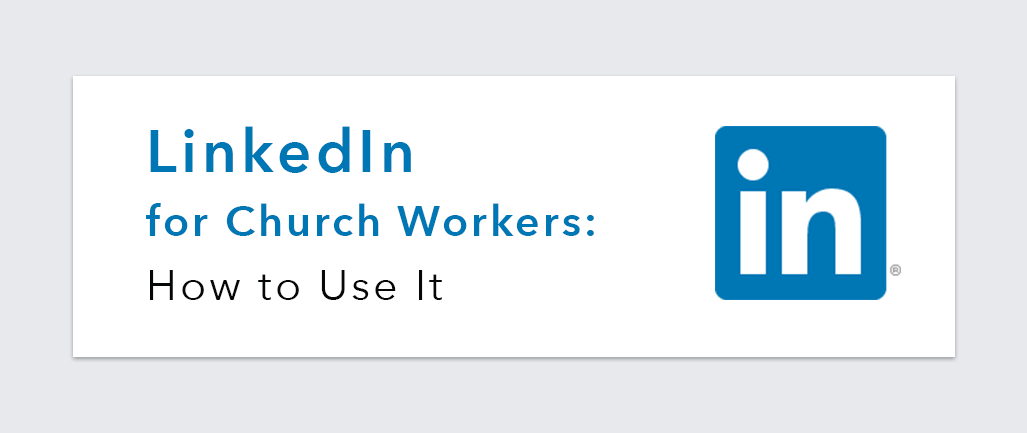
Hopefully my previous blog post got you excited about the potential for networking and using LinkedIn as your network! In this post, I’d like to share how you can easily build your profile, build your network, and NETWORK.
If you already have a profile on LinkedIn, I’ve included some information for getting the most from it as well.
Setting up a new profile on LinkedIn is an easy process started by going to LinkedIn.com. LinkedIn walks you through each step of the process, so no need to do that here, but I do want to highlight important aspects and uses of the information you can enter.
Building Your Profile
The more complete your LinkedIn profile is, the more it will help your networking. A good summary of your professional career (similar to a summary on a resume) is essential. Take the time to be as accurate as possible and complete as many of the sections as possible with your experience, skills, and education, and work places.
I encourage you to also add the appropriate sections like volunteer work, education, certifications, skills and organization memberships for a well-rounded profile. There are a number of “Sections” (see the dropdown), so complete those which fit your profile. If you are the originator of media such as videos, presentations, artwork, articles, you can and should add them as well. You can upload or link to any media you have produced.
The completeness of your profile will help you grow your network. LinkedIn prompts you to connect with “people you may know”. They base their prompts in part on commonalities between you and other members. “People you may know” may be based on common connections, experience, employers, industry, or attendance at the same school.
You also have the opportunity to control privacy settings for the various aspects of your public profile. This includes your photo, work experiences, skills, etc. While personal to the user, I allow “the public” to view all aspects of my public profile. I’m in it for the networking opportunities!
Speaking of visibility, you have the option to notify your network anytime you publish an update to your profile. I strongly recommend only notifying your network of new information, not editing changes.
Building Your Network
So now that you have a public profile set up, you’ll want to connect with people. Connections are professional contacts whom you know or wish to know. The connections you add on LinkedIn become part of your professional network. There are 4 main categories of connections.
Personal Connections
LinkedIn will prompt you to search for connections by crawling your email, if you choose to give LinkedIn access to do that. You can use this to see who among your email connections already has a LinkedIn account and invite them to become part of your professional network.
You can also search individually for people you know and ask them to link with you.
Groups
You have the opportunity to search and follow specific groups. They may be based upon alumni, skill sets, or employers. Groups may be public or private. Private groups allow the group manager to determine who may participate or if they should be a member. You can search for Groups in the search bar.
To get you started, check groups like Concordia University Chicago or New Starts…New Believers (self promotion for the NID). They are private, but you can request to join if you wish. See what others, based upon your work experience and/or educational experience you would like to join. If you look at the tab called “Interests”, you will see all of the groups that you are following.
Some groups also allow members to post information directly to the group. This is a great advantage when seeking advice.
Public Organizations
Similar to Groups, these are more in line with businesses. Again, Concordia University Chicago, is also set up as a University (business type). Concordia Technology Solutions as well as The LCMS have LinkedIn profiles. You can follow them for the variety of information they may provide.
Here too, some organizations allow individuals to post on their site.
LinkedIn Suggestions
As mentioned earlier, LinkedIn prompts you to connect with “people you may know”. They base their prompts, in part, on commonalities between you and other members. But, you can actively seek out potential connections under the “My Network” tab.
Network!
What is important to remember in networking, is that it is two-way. I strongly encourage to post information that you feel could be helpful to other church workers. You have your special gifts and talents for your profession and it would be a waste not to share them with others. They will appreciate it!
I will say also, that as the administrator for our LinkedIn group, I am on LinkedIn every day. I encourage you also to check your connections’ postings daily. You can congratulate your connections on their new jobs and accomplishments as well as find helpful information on topics you are interested in. We all seem to have time to check in on other social media, so would not your professional network be just as important?
Networking has been called is the single most powerful tactic to accelerate and sustain success for an individual or organization. So church workers, let’s do this!
Want to receive notifications about more content like this? Subscribe to this blog, Technology & Your Ministry.
























